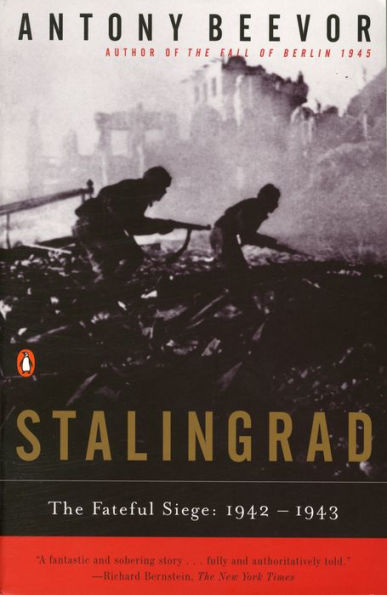Read an Excerpt
The silence that fell on 2 February in the ruined city felt eerie for those who had been used to destruction as a natural state. Grossman described mounds of rubble and bomb craters so deep that the low angled winter sunlight never seemed to reach the bottom, and 'railway tracks, where tanker wagons lie belly up, like dead horses.'
Some 3,500 civilians were put to work as burial parties. They stacked frozen German corpses like piles of timber at the roadside, and although they had a few carts drawn by camels, most of the removal work was accomplished with improvised sleds and handcarts. The German dead were taken to bunkers, or the huge anti-tank ditch, dug the previous summer, and tipped in. Later, 1,200 German prisoners were put to work on the same task, using carts, with humans instead of horses pulling them. 'Almost all members of these work parties,' reported a prisoner of war, 'soon died of typhus.' Others, 'dozens each day' according to an NKVD officer in Beketovka camp - were shot on the way to work by their escorts.
The grisly evidence of the fighting did not disappear swiftly. After the Volga thawed in spring, lumps of coagulated blackened skin were found on the river bank. General de Gaulle, when he stopped in his Stalingrad on his way north to Moscow in December 1944, was struck to find that bodies were still being dug up, but this was to continue for several decades. Almost any building work in the city uncovered human remains from the battle.
More astonishing than the number of dead was the capacity for human survival. The Stalingrad Party Committee held meetings in all districts 'liberated from Fascist occupation', and rapidly organized a census. They found that at least 9,976 civilians had lived through the fighting, surviving in the battlefield ruins. They included 994 children, of whom only nine were reunited with their parents. The vast majority were sent off to state orphanages or given work clearing the city. The report says nothing of their physical or mental state, witnessed by an American aid worker, who arrived very soon after the fighting to distribute clothes. 'Most of the children', she wrote, 'had been living in the ground for four or five winter months. They were swollen with hunger. They cringed in corners, afraid to speak, to even look people in the face.'
The Stalingrad Party Committee had higher priorities. 'Soviet authorities were immediately reinstalled in all districts of the city', it reported to Moscow. On 4 February, Red Army Commissars held a political rally for 'the whole city', both civilian survivors and soldiers. This assembly, with its long speeches in praise of Comrade Stalin and his leadership of the Red Army, was the Party's version of a service of thanksgiving.
The authorities did not at first allow civilians who had escaped to the East Bank to return to their homes, because of the need to clear unexploded shells. Mine-clearance teams had to prepare a basic pattern of 'special safe paths'. But many soon managed to slip back over the frozen Volga without permission. Messages appeared chalked on the side of ruined buildings, testifying to the numbers of families broken up by the fighting: Mama, we are all right. Look for us in Beketovka. Klava.' Many people never discovered which of their relatives were alive or dead until after the war was over.
(Continues…)
Excerpted from "Stalingrad"
by .
Copyright © 1999 Antony Beevor.
Excerpted by permission of Penguin Publishing Group.
All rights reserved. No part of this excerpt may be reproduced or reprinted without permission in writing from the publisher.
Excerpts are provided by Dial-A-Book Inc. solely for the personal use of visitors to this web site.



